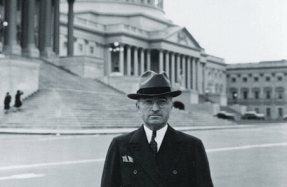


LIKE THE BARRAGE BALLOON AND THE ASSAULT GLIDER, THE TORPEDO BOMBER IS A WEAPON WE WILL NEVER SEE AGAIN.
Its fate had been sealed nearly four decades earlier, but the brief 1982 Falklands War showed that ship-killing missiles such as the Exocet could achieve more than an entire air wing of World War II torpedo bombers. And they could accomplish their mission at near-supersonic speeds from stand-off range. Today, nobody needs airplanes launching submersible motorboats while flying at the speed of a fast car.
The torpedo bomber’s glory days, when German capital ships and entire Italian fleets were being torpedoed in the European theater while the Japanese lost their precious aircraft carriers in the Pacific, lasted from 1940 to late ’42. Yet the Grumman TBF Avenger, the finest torpedo bomber to fly in any war, lived on far beyond its star turn. As surface ship targets disappeared, Avengers began dropping more bombs than torpedoes, and the airplane developed new roles as WWII progressed: anti-submarine hunter-killer, convoy guardian, close air support attack aircraft, radar platform, airborne early-warning sentry, longrange reconnaissance patroller and ultimately that most utilitarian of roles, carrier onboard delivery truck. The big Grumman had the substantial bomb bay, unusually spacious interior, multiple seats and excellent performance to get away with it.
Though it may not be obvious, this beast of an airplane was a supersized version of the F4F Wildcat. Both were midwing, barrel-bodied, hell for stout warplanes with surprising performance even though they were often characterized as underpowered. The Avenger introduced carrier aviation to Grumman’s remarkable Sto-Wing system, enabling an airplane to fold its wings alongside its body like a bird. Sto-Wings were quickly fitted on the Wildcat as well, beginning with the F4F-4 version. On the Avenger they narrowed the wingspan from 54 feet 2 inches to just over 18 feet and eliminated




